 |
 |
 |
| |
Ritonavir Boosts Levels of MK-1439, a New Nonnucleoside--TDF Has No Impact
|
| |
| |
53rd ICAAC, September 10-13, 2013, Denver
Mark Mascolini
Ritonavir more than tripled exposure of MK-1439, a novel nonnucleoside reverse transcriptase inhibitor (NNRTI), while almost tripling the 24-hour (trough) concentration, in a study involving HIV-negative volunteers [1]. Tenofovir had no impact on MK-1439 concentrations.
A placebo-controlled trial of MK-1439 monotherapy found that the drug lowers viral load 1.37 log10 copies after 7 days of 25 mg once daily and 1.26 log10 copies after 7 days of 200 mg once daily [2]. In cell studies the NNRTI had good activity against an assortment of viruses bearing classical NNRTI resistance mutations [3]. In these studies high concentrations of MK-1439 selected a rilpivirine-associated mutation.
Pharmacokinetic research indicates that MK-1439 does not significantly inhibit or induce CYP3A activity. But this NNRTI is metabolized by oxidation via the CYP3A4 enzyme and thus could be affected by CYP3A4 inhibitors and inducers. Ritonavir strongly inhibits CYP3A and induces other enzymes that help metabolize MK-1439. Tenofovir has what the investigators called an "idiosyncratic interaction potential." MK-1439 does not appear to inhibit or induce other major CYP enzymes.
The drug-drug interaction studies involved healthy HIV-negative men who took a fixed sequence of drugs. Separate studies of potential interactions with ritonavir and tenofovir both enrolled 8 men. In the ritonavir study participants took a single 50-mg dose of MK-1439, followed by a 7-day washout. In the second period they took 100 mg of ritonavir twice daily for 20 days, adding a single 50-mg dose of MK-1439 with the morning ritonavir dose on day 14.
In the tenofovir study 8 men took a single 100-mg dose of MK-1439, followed by a 7-day washout. In the second period they took 300 mg of tenofovir once daily for 18 days, adding a single 100-mg dose of MK-1439 with tenofovir on day 14.
All 8 volunteers in the ritonavir study completed all doses. One volunteer dropped out of the tenofovir study because of colonic diverticulitis judged definitely not related to MK-1439. No serious clinical or laboratory adverse events developed in either study. No one had central nervous system problems attributed to MK-1439, and the NNRTI had no impact on electrocardiograms.
Geometric mean ratios (GMR) comparing MK-1439 plus ritonavir with MK-1439 alone indicated that ritonavir more than tripled the area under the concentration-time curve (AUC) of MK-1439 (GMR 3.54, 90% confidence interval [CI] 3.05 to 4.12) and nearly tripled the 24-hour concentration of MK-1439 (GMR 2.91, 90% CI 2.33 to 3.62). Apparent terminal half-life rose from 13.9 hours with MK-1439 alone to 34.9 hours with ritonavir. Ritonavir had little impact on the maximum concentration of MK-1439 (GMR 1.31, 90% CI 1.17 to 1.46).
The researchers suggested these findings mean "ritonavir has a limited effect on MK-1439 bioavailability and absorption but a significant effect on MK-1439 elimination due to inhibition of CYP3A4."
Tenofovir had little or no impact on concentrations of MK-1439 as indicated by GMRs of 0.97 (90% CI 0.82 to 1.15) for AUC, 0.82 (90% CI 0.66 to 1.02) for maximum concentration, and 0.95 (95% CI 0.81 to 1.13) for 24-hour concentration.
MK-1439 is currently in phase 2b trials.
References
1. Anderson MS, Gilmartin J, Mitselos A, et al. Effect of ritonavir and tenofovir on the pharmacokinetics of MK-1439, a novel HIV-1 non-nucleoside reverse transcriptase inhibitor (NNRTI). 53rd ICAAC. September 10-13, 2013. Denver. Abstract H-1462.
2. Anderson M, Gilmartin J, Robberechts M, et al. Safety and antiviral activity of MK-1439, a novel NNRTI, in treatment-naive HIV+ patients. 20th Conference on Retroviruses and Opportunistic Infections. March 3-6, 2013. Atlanta, Abstract 100. http://www.natap.org/2013/CROI/croi_24.htm
3. Lai M, Feng M, Lu M, et al. Antiviral activity and in vitro mutation development pathways of MK-1439: a novel non-nucleoside reverse transcriptase inhibitor. 52nd Interscience Conference on Antimicrobials and Chemotherapy (ICAAC). September 9-12, 2012. San Francisco. Abstract H-551. http://www.natap.org/2012/ICAAC/ICAAC_23.htm

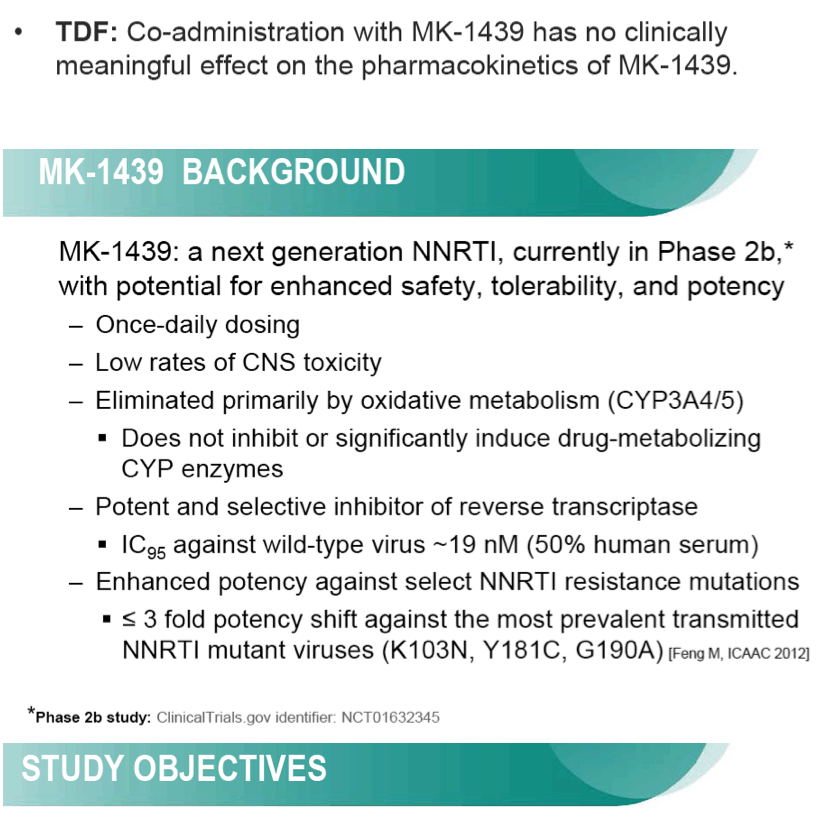

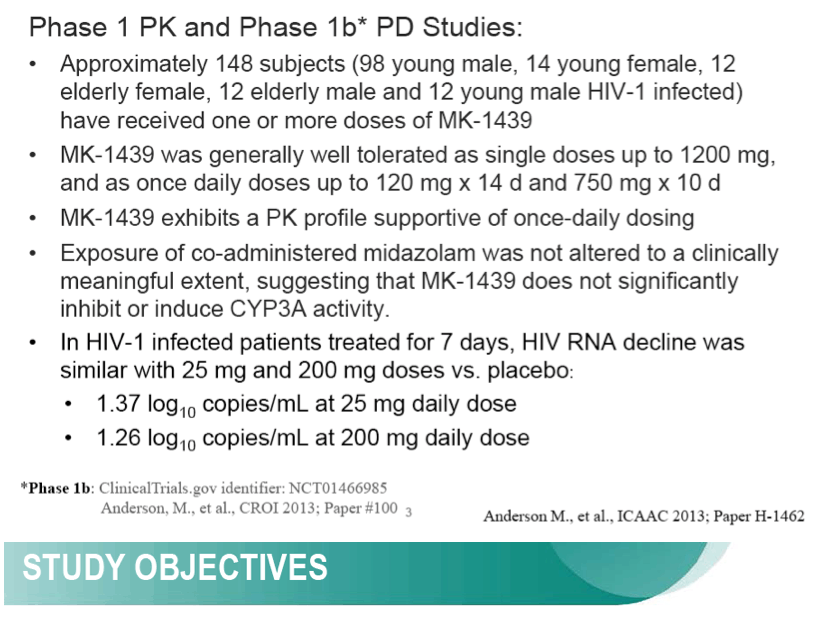
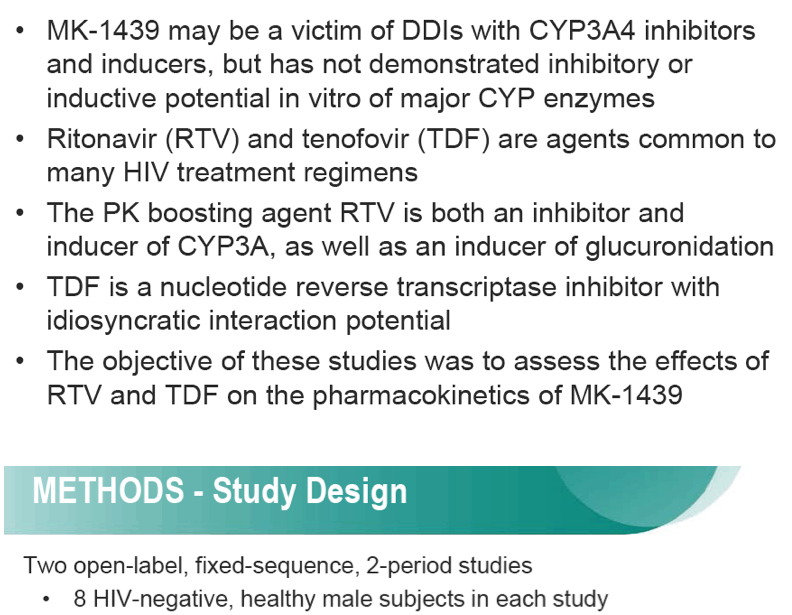
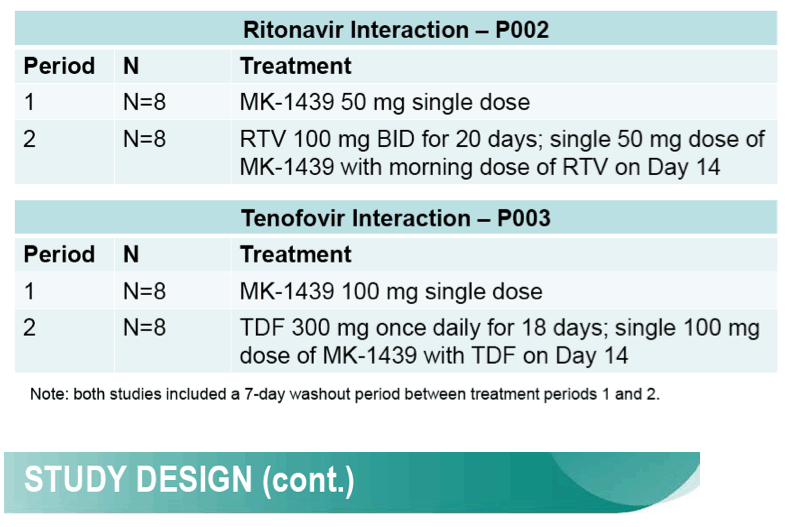
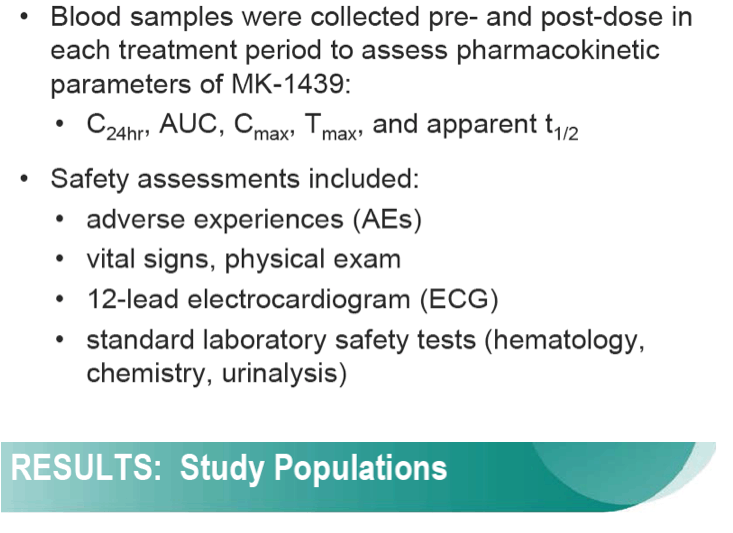
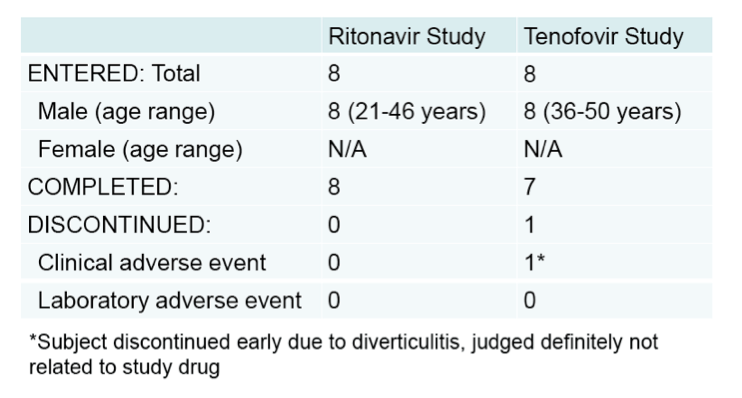
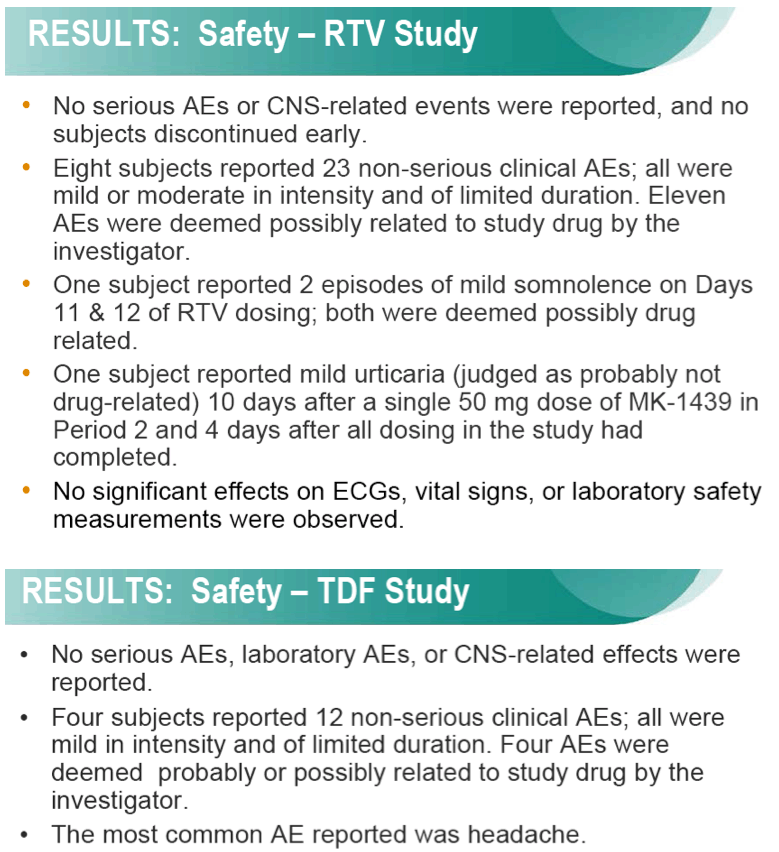
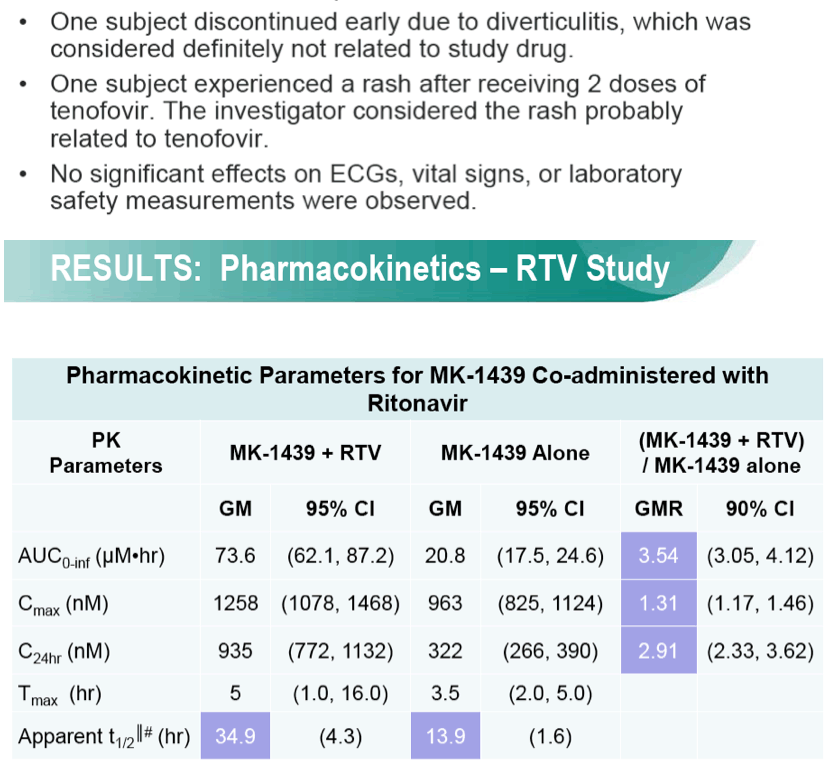
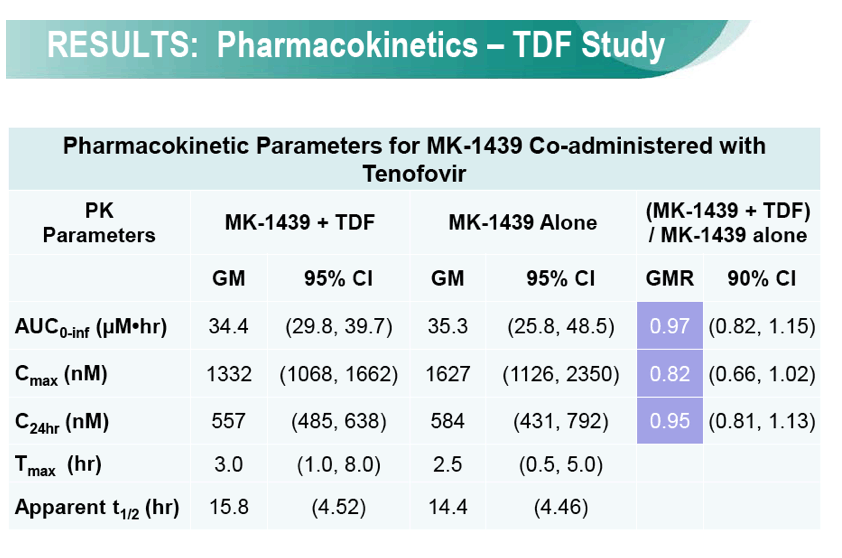
|
| |
|
 |
 |
|
|